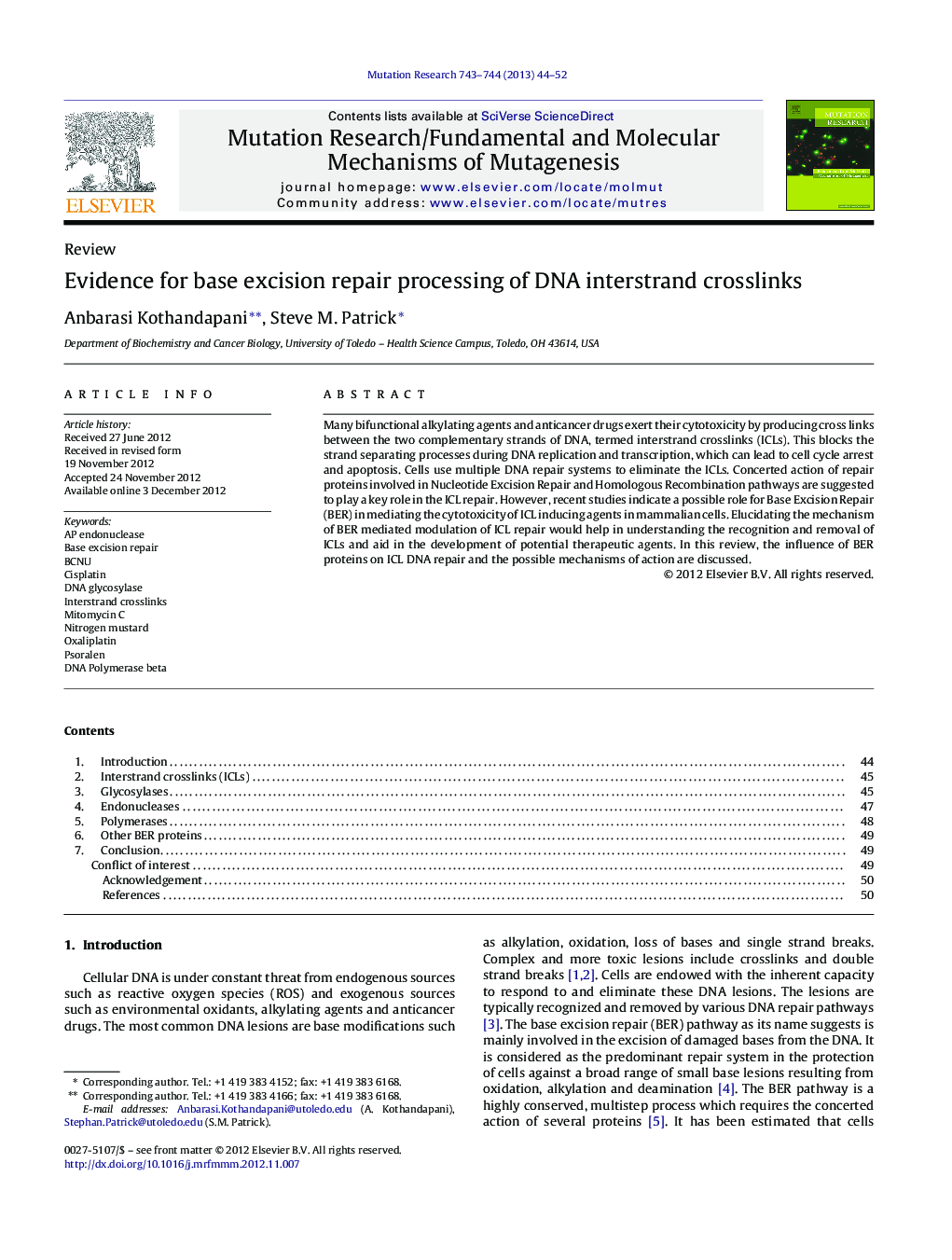| Article ID | Journal | Published Year | Pages | File Type |
|---|---|---|---|---|
| 2146428 | Mutation Research/Fundamental and Molecular Mechanisms of Mutagenesis | 2013 | 9 Pages |
Many bifunctional alkylating agents and anticancer drugs exert their cytotoxicity by producing cross links between the two complementary strands of DNA, termed interstrand crosslinks (ICLs). This blocks the strand separating processes during DNA replication and transcription, which can lead to cell cycle arrest and apoptosis. Cells use multiple DNA repair systems to eliminate the ICLs. Concerted action of repair proteins involved in Nucleotide Excision Repair and Homologous Recombination pathways are suggested to play a key role in the ICL repair. However, recent studies indicate a possible role for Base Excision Repair (BER) in mediating the cytotoxicity of ICL inducing agents in mammalian cells. Elucidating the mechanism of BER mediated modulation of ICL repair would help in understanding the recognition and removal of ICLs and aid in the development of potential therapeutic agents. In this review, the influence of BER proteins on ICL DNA repair and the possible mechanisms of action are discussed.
► BER pathway is mainly involved in the excision of damaged bases from the DNA. ► BER is also involved in the processing of bulky lesions and interstrand crosslinks. ► BER proteins process ICLs, mostly based on the distinct DNA structural distortions.
